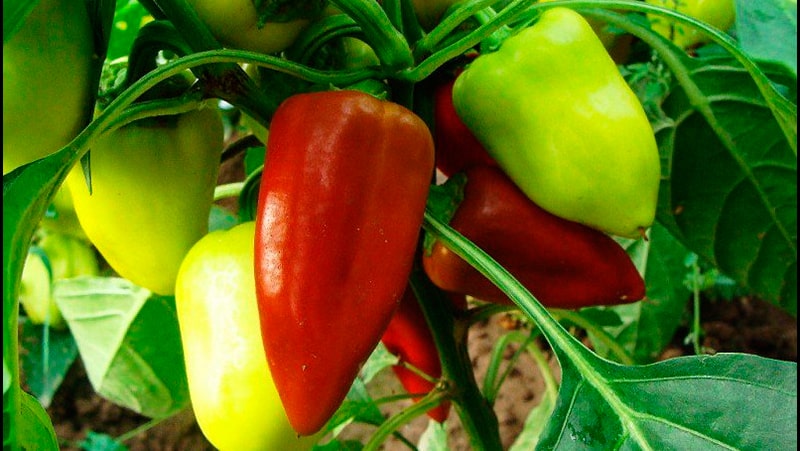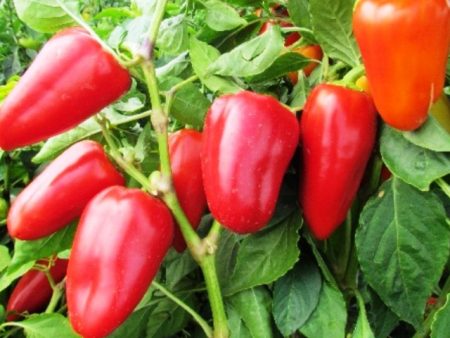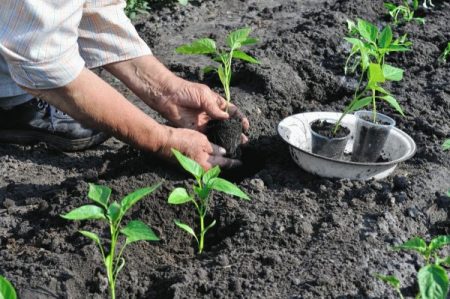 Thanks to new developments by breeders, a wonderful variety of pepper, Victoria, appeared. Today, Victoria pepper is a leader in productive varieties and is very popular among gardeners, summer residents and amateur gardeners. This culture develops well not only in greenhouse conditions, but also in open ground and does not need special care. Its fruits are well preserved during transportation, not very “stale” during long storage. Taste is not inferior to other types of pepper. Victoria pepper has the most southern origin, and therefore it lacks one season for development. Farmers replace this season with a seedling method of cultivation. When transplanting, the culture requires some attention, since the root system of pepper is very sensitive to changes.
Thanks to new developments by breeders, a wonderful variety of pepper, Victoria, appeared. Today, Victoria pepper is a leader in productive varieties and is very popular among gardeners, summer residents and amateur gardeners. This culture develops well not only in greenhouse conditions, but also in open ground and does not need special care. Its fruits are well preserved during transportation, not very “stale” during long storage. Taste is not inferior to other types of pepper. Victoria pepper has the most southern origin, and therefore it lacks one season for development. Farmers replace this season with a seedling method of cultivation. When transplanting, the culture requires some attention, since the root system of pepper is very sensitive to changes.
Content
History and characteristics of Victoria pepper
Variety "Victoria" was created on the territory of the Republic of Moldova from two equally well-known varieties ("Gift of Moldova" and "Swallow") and, accordingly, is mainly grown in the same area. It easily takes root in Ukraine, as well as in the southern lands of Russia. It can grow in colder areas, but this will require special conditions.
Earlier, juicy chernozem was fundamental for its cultivation, but over the years gardeners have achieved that Victoria pepper has adapted to a more complex soil composition, which is used in greenhouse conditions. This variety also has strong frost resistance, but only after it has taken root in the soil. Young shoots still need weather protection, which is why experienced farmers recommend planting them after the May frosts.
Appearance
The appearance of the fruit is not much different from ordinary southern pepper. They are streamlined, conical, drooping to the ground, the edges on four sides are virtually invisible. Their first maturity, which is called technical, gives them a green or light yellow color. Full ripeness paints them in a bright red color. Each individual fruit reaches a fairly large size (up to 10 cm) and weighs about 100 grams, as it is distinguished by thick, fleshy walls.

Utility
Pepper fruits have an unforgettable rich aroma, they are juicy and rich in vitamins and minerals. They included:
- Vitamins C, E, A, B3, B5, B6;
- potassium;
- magnesium;
- sodium;
- phosphorus;
- calcium.
It is because of its rich composition that Victoria pepper is useful to eat fresh. During the heat treatment, the flesh of the pepper gives an unforgettable taste and aroma that will decorate any dishes.
Viability
Pepper is resistant to black rot, fungal infection (pathogen of the genus Verticillium), tobacco mosaic virus (Tobacco mosaicvirus, TMV). Although it is worth noting that infection by the above method actively affects precisely such a cultivated plant as pepper. That is why storage and transportation is a hallmark of the Victoria variety. For example, in a cellar, pepper can be stored for up to a month, the main thing is not to put the fruits closely together.
Planting Victoria Peppers
Pepper is a medium-sized plant: its maximum growth is not more than 50 cm. Both large landing spaces and small film shelters are suitable for it.
Planted in the last month of winter by the seedling method. Seedlings ripen at home for no more than 9-10 weeks, after which it is ready for substantiation in a permanent place. Usually this happens in the last month of spring, the deadline for landing is the beginning of summer.Find out, how to plant pepper for seedlings.

Thanks to the experience of summer residents and gardeners, it is known that when transplanting between separate seedlings, a distance of 45-50 cm should be left. This will allow the bushes to grow quietly. From the ground to the first leaves it is necessary to leave 2-3 cm, since the stem is still thin and can easily break.
Agrotechnical approach
Throughout the season allotted for the growth of Victoria pepper, germinating petals are removed from a single stem to its fork. This is required in order for the plant to give all its strength to the growth of fruits, not foliage. The upper branches, too weighed down by foliage, are also cut off, and dried leaves are removed.
Regular weeding, loosening of the soil and watering will help Victoria pepper to grow without interference and give a rich harvest. A systematic care of the soil through its fertilizer will enrich and facilitate this process.
Timely feeding will help the plant to be healthy. The first feeding occurs when two good leaves appear. You can feed sodium or potassium humate according to the instructions (the main component of humic substances), as well as urea (1/2 teaspoon). Any dressing should be diluted in one liter of water. The second feeding is carried out ten days after the first. Microfertilizers are also used for better seedling growth.
Reviews
Reviews about the Victoria pepper are the most positive. It is not whimsical, frost-resistant and can take root in any region, even in such as Siberia. Gardeners are very happy with its fruitfulness, because from one bush you can collect a lot of crops.
Sima
I never thought that I would see so much harvest on one bush, but the main thing is to remove excess foliage in a timely manner.
Anna
The good news is that pepper is stored for a long time. They drove him from his mother for several days in an ordinary basket, laying a newspaper between them. Everything arrived safe and sound.
Helena
Extremely juicy and meaty variety, great for preparing winter salads. The lecho with it is very thick.
Veronica
She thought that Victoria pepper would never take root in Siberia, but she was mistaken. Of course, it should be planted in February, and transplanted closer to summer and in a good greenhouse with a thick film, but how glad we were to harvest!




 Calorie pepper stuffed with meat and rice - BZHU per 100 grams
Calorie pepper stuffed with meat and rice - BZHU per 100 grams Gorky pepper - the best varieties for open ground
Gorky pepper - the best varieties for open ground Hot pepper seeds - the best varieties for open ground and reviews
Hot pepper seeds - the best varieties for open ground and reviews Capsicum tincture for hair - how to use and reviews
Capsicum tincture for hair - how to use and reviews